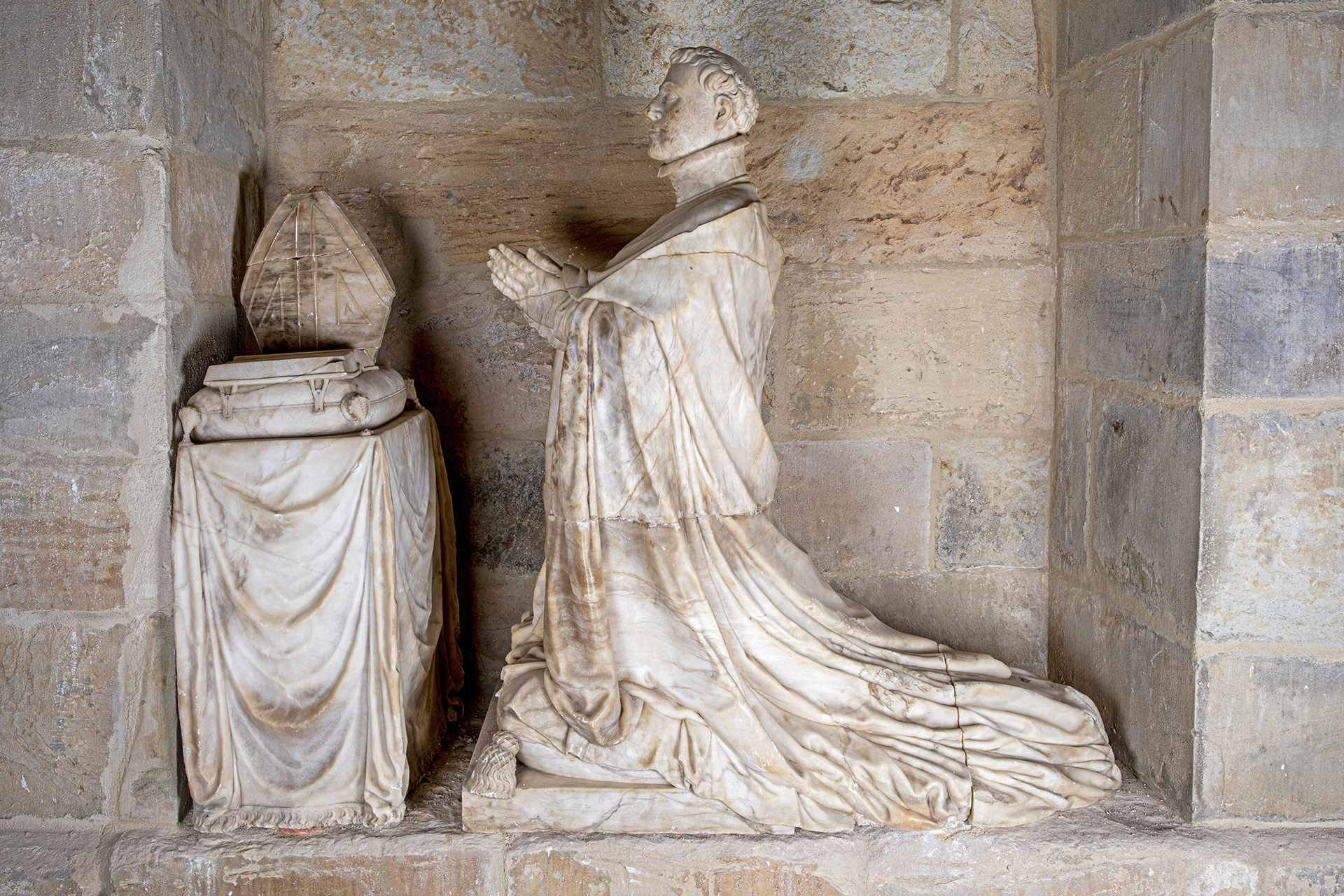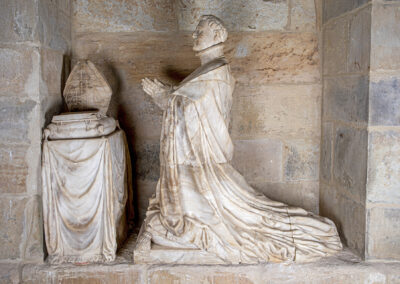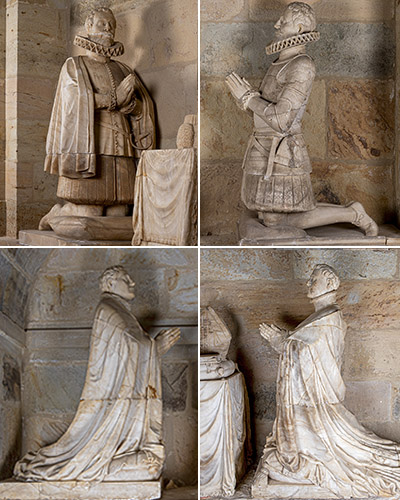On the epistle side of the presbytery is the praying statue of Fernando de Acebedo, the prelate who ordered the building of the palace complex of Hoznayo, of which the chapel of San Juan Bautista forms part, where he placed the funerary sculptural series that he commissioned from the sculptor Gabriel de Pinedo.
In the only surviving contract of this series, dated 5 May 1612, it is stated that, on his return from Plasencia, the Soria sculptor Esteban Fernández was to work "dtwo figures of a bulk that his lordship wants to be made one of his lordship in the ordinary dress of a bishop in a roquette and mantelpiece with his seat and a black letter sign". In the end, Esteban Fernández must have died and was unable to fulfil the commission, but Gabriel de Pinedo did, who collected the four figures in 1617.
Nor is the sitter dressed, as the contract stipulates, in a roquete and tablecloth, the latter of which is worn by bishops when they are in a diocese that is not their own, but in a long cape with beautifully carved folds. The reason is simple: he signed the contract when he was bishop of Osma and, a year later, he was elevated to the metropolitan chair of Burgos, an archdiocese that included the present diocese of Santander, so he can appear dressed in the garments that identify him as his ordinary. The long cape, the high, stiff collar and the gloved hands recall the praying statue of Cristóbal de Rojas that his nephew, the 1st Duke of Lerma, a favourite of Philip III, had placed in the Collegiate Church of San Pedro de Lerma in 1608.
As archbishop of Burgos, it was Fernando de Acebedo who, in 1615, officiated at the marriage by proxy between Louis XIII and the Infanta Anne of Austria and shortly afterwards, against the criteria of Lerma, from whom he began to distance himself, he was given the presidency of Castile, a post from which he was removed in 1621, the king compensating him with the Council of State. This information appears in the inscription on two slabs on either side of the arcosolium, which is therefore later than the sculpture.
Old photographs show the wooden coffin hanging above his head in the upper part of the arcosolium, in which, according to the inscription, the skeletal remains of his father were kept.



